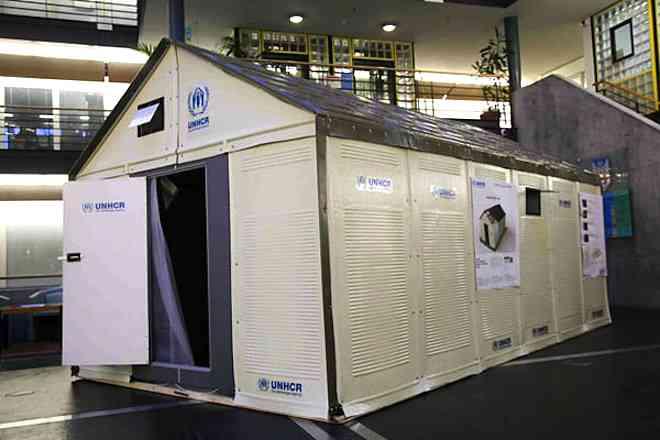IKEA creates modular shelters for refugees
The IKEA Foundation is working with the United Nations Refugee Agency to develop and launch these new, more sturdy refugee shelters. (Photo courtesy of the UNHCR.)
The world is facing its worst refugee crisis in years, according to a report from the United Nations Refugee Agency.
More than 35.8 million people are living in places they never planned to live. More than 23,000 people are forced to leave their homes every day by war, politics, poverty or climate change.
The transition from citizen to refugee can be sudden, but could there be more planning devoted to where people end up when they’re displaced?
The IKEA Foundation, the charitable arm of the iconic Swedish furniture company, has come up with an innovation using its expertise in developing low-cost design solutions for consumers to do the same for displaced people.
In a partnership with the United Nations, the company is rolling out a new, durable, easy-to-transport and easy-to-assemble lodging for refugees. Each unit comes with a solar panel for electricity and can house a single family.
The design and features are a big improvement over the common refugee tent, which is meant to last for six months. For many refugees, that’s not nearly enough time, said Greg Hodgin, the founder of Peacebuilding Solutions, a company he says aims to build better refugee camps through design.
“A lot of these refugees are stuck in these camps for a long time. We’re talking on the average of 7-8 years, sometimes more,” Hodgin said.
In Kenya, some people have stayed in a large refugee camp, more than 500,000 people, since the 1990s.
Refugees often linger in camps once feelings of hopelessness begin to compound, Hodgin said, and the best way to elevate them from poverty is through education and employment, not just providing basic living essentials, like food and water.
The refugees must be open to the extra help for the programs to work, and Hodgin said one of the first things his organization does is conduct research in the community to see if they want help.
“Just because you have this wonderful new technology that can do whatever you want it to do doesn’t mean the local population is actually going to accept it,” he said.
IKEA’s shelters currently cost more than $7,000 per unit, but the designers believe they can eventually cut costs as low as $100.
